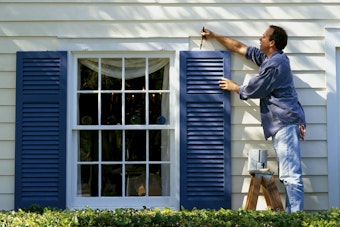Storm Window Selection
Storm Window Selection
<< BackInstalling storm windows to your home not only adds extra protection during bad weather, it’s an economical way to lower your energy bill while keeping your home cool in the summer and warm in the winter. And thanks to how easy it is to install the windows, it can usually be done in a couple of hours. Before you install the windows it’s important to choose the right type of storm window for your needs. Learn more by reading the tips below and applying what works with your home.
Types of Storm Windows
Before purchasing storm windows, it’s important to research the type of window you need and if you would like to install the windows on the inside or outside of the home. This article from Bob Vila has great information to help you determine where you’d like to install the windows. Overall, there are four different types of storm windows to choose from. You can find these windows at your local hardware or window specialty store. These are:
- Two-Track: In a two-track model, the screen and pane do not slide up or down. The inside track containing the inside pane can be raised to allow fresh air to enter the home through the screen. Additionally, two-track storm windows are usually used with double-hung windows.
- Triple-Track: A triple-track storm window has the two window panes and the half-screen resting in separate tracks so each one can move independently. This model gives you the ability to open the window completely without a screen there, when necessary. Similar to two-track windows, triple-track windows are used with double-hung windows.
- Two-Track Slider: Two-track sider storm windows are similar to regular two-track storm windows except they open horizontally instead of vertically.
- Basement: Basement storm windows have one pane and are held in place by thumb latches on the outside of the frame.
Prep and Installation
Once you have an idea of what type of storm window you’d like, it’s time to prep for installation. To ensure the window fits, take measurements for each window you’re replacing in your home.
To Determine Width: Measure the inside of the molding on one side of the window and the inside molding on the other side of the window. It’s important to measure each side of the window and use the narrowest measurement for the width of your storm window.
To determine the Height: Measure the sill to the inside of the molding at the top of the window. Then, measure the four corners of the window and use the shortest measurement for the height of your storm window.
After you’ve measured the window, it’s time to purchase the type of window that’s best for your home. If you’re replacing a storm window with a new one, check out this article from DIY Network. Once the old window is off, check out these step-by-step instructions from This Old House to learn how to properly install the storm window in your home.
Tip: For storm windows or other sliding windows or doors around the home, use WD-40 Specialist® Silicone to lubricate sliding tracks and protect the waterproofing and integrity of the seals.
FEATURED PRODUCTS
WANT TO GET MORE TIPS AND TRICKS?
SUBSCRIBE TO THE NEWSLETTER


